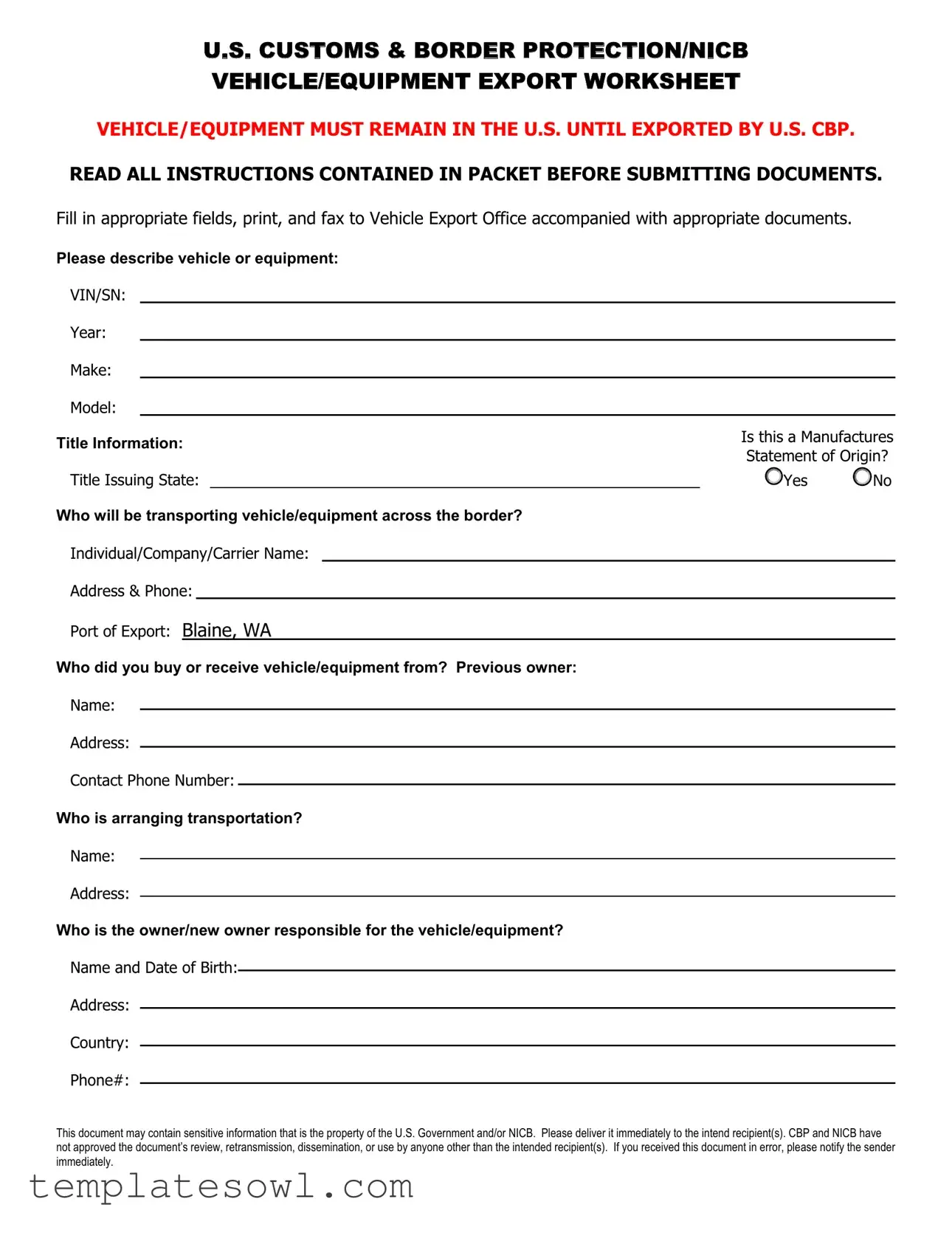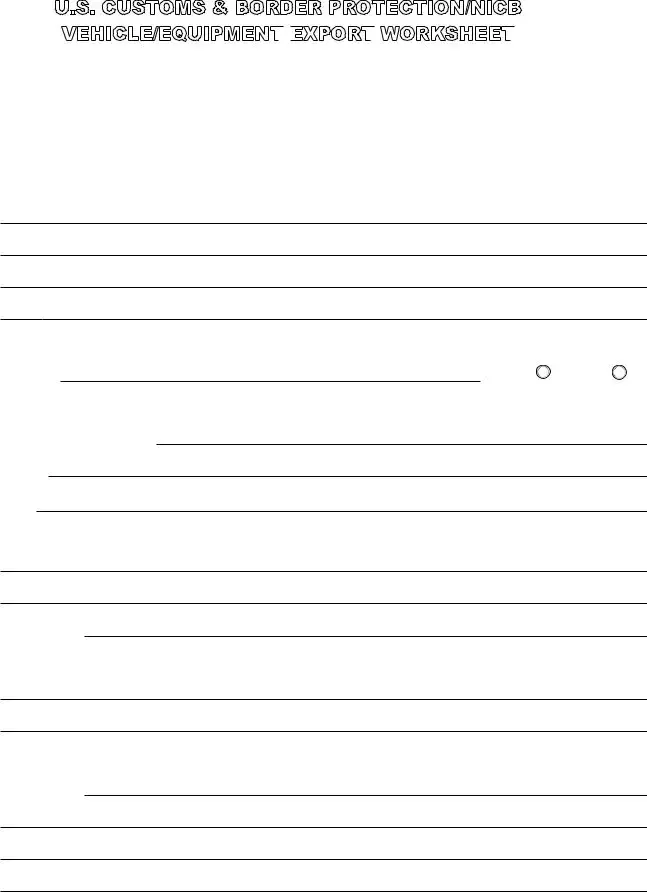Completing the U.S. Customs and Border Protection (CBP) form can be a straightforward process, but many people encounter pitfalls that can delay their transactions. Here are nine common mistakes made during this critical procedure.
Firstly, failing to read the instructions is a prevalent error. Each section of the form contains specific guidelines that must be followed. Ignoring these instructions may lead to incomplete submissions, resulting in unnecessary delays.
Secondly, inaccurate vehicle information can lead to significant complications. Providing incorrect information about the Vehicle Identification Number (VIN), year, make, or model can create confusion and potential issues at the border. Always double-check details against your documentation.
Another mistake is neglecting to include contact information for all parties involved. Missing names or phone numbers of buyers, sellers, or transporters can cause delays in processing the form. Make sure every relevant individual is listed with accurate contact information.
Also, many individuals overlook the need for a Manufacturers Statement of Origin. If you're unsure whether to check "Yes" or "No", it’s crucial to seek clarification. Incorrectly selecting this option could lead to the rejection of the application.
Omitting the port of export is another frequent error. While Blaine, WA is often the point of export, it’s essential to verify and clearly indicate this on the form, especially if another port will be used.
Furthermore, not having proper authorization for those involved in transportation can be a hurdle. Confirm that whoever is transporting the vehicle or equipment is authorized and their information is accurate on the form.
Many people also forget to provide specific information about the previous owner. Including the name, address, and contact number of the previous owner is vital for a smooth process. Without this, customs may have difficulty verifying ownership.
Additionally, failing to include the owner's or new owner's full details, including date of birth and country, can hinder the approval of the export paperwork. Each detail matters, and it's vital to ensure this information is complete and current.
Finally, forgetting to double-check the entire form before submission is an easy oversight. A thorough review can catch mistakes that could delay processing or result in rejection. Approaching the form with diligence ensures efficiency and compliance with regulations.



 EXPORT
EXPORT

 WORKSHEET
WORKSHEET
